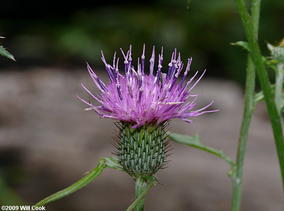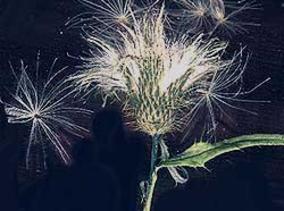You are here
Taxonomy
Cirsium carolinianum (Walt.) Fern. & Schub.
Nomenclature
-
Family: CompositaeGenus: Cirsium
-
Synonyms: 2
SUMMARY
This species was first described by Thomas Walter as Carduus carolinianus in 1788 in Flora caroliniana: secunda systema vegetabilium perillustris Linnaei digesta; characteres essentiales naturalesve et differentias veras exhibens; cum emendationibus numerosis: descriptionum antea evulgatarum: adumbrationes stirpium plus mille continens: necnon, generibus novis non paucis, speciebus plurimis novisq. The species was moved from the genus Carduus to Cirsium, and it was thereby renamed Cirsium carolinianum, as discussed by M. L. Fernald and B. G. Schubert in Rhodora in 1948. Cirsium flaccidum and Carduus flaccidus are outdated but accepted synonyms. Carthamus carolinianus, however, is a misnomer and should not be associated with this species.
Cirsium carolinianum is a biennial herb belonging to the New World lineage of true thistles. It is characterized by prickly, progressively reduced leaves and spinulose, slightly hairy, erect stems. Purple-pink to white flowering heads atop a bulbous involucre of bracts are terminally located. It grows in full sun and dry soils, preferring open environments such as open rocky woods, roadsides, valleys and thickets. Sexual reproduction occurs with flowers appearing between the months of April and July. Presence of tubular flowering structures is needed to distinguish it from otherwise similar-looking species of Cirsium. It is widely distributed in the southeastern United States, naturally occurring as far to the north as southern Illinois, as far west as Texas, and around the coast line, excluding areas of peninsular Florida. Although classified in some regions as a noxious weed for agricultural purposes, it is considered a threatened species in others. Available habitat is decreasing due to overshadowing of forests, and it has recently become subject to infestation by an invasive species of weevil intended in weed biocontrol. It can be cultivated to attract desired species of birds or butterflies in gardens.






